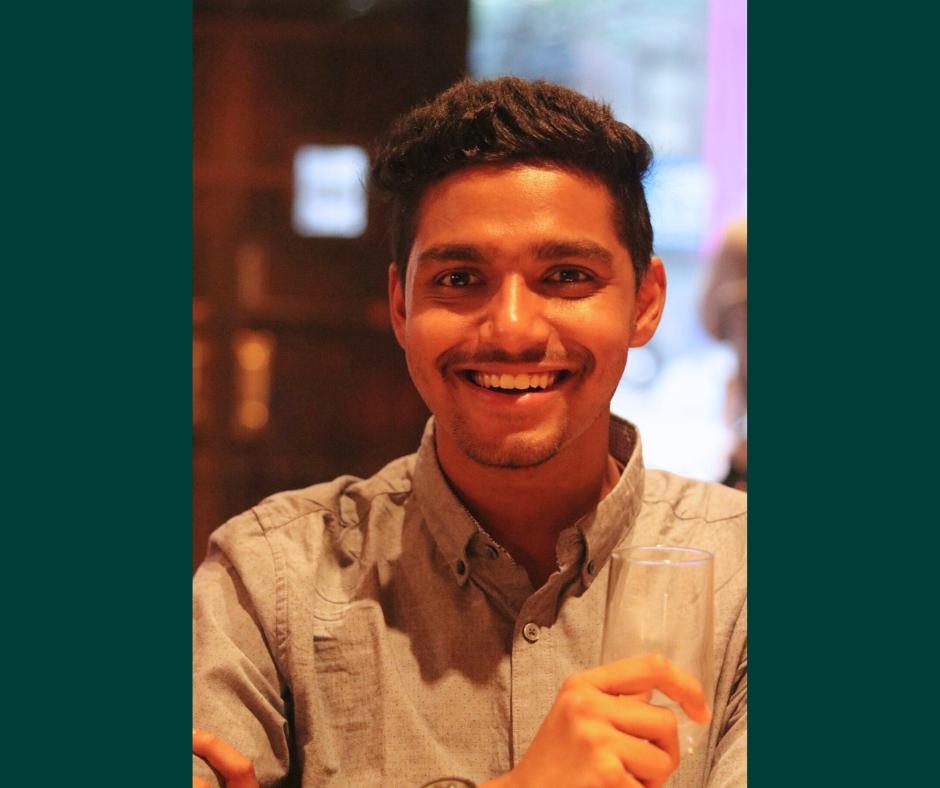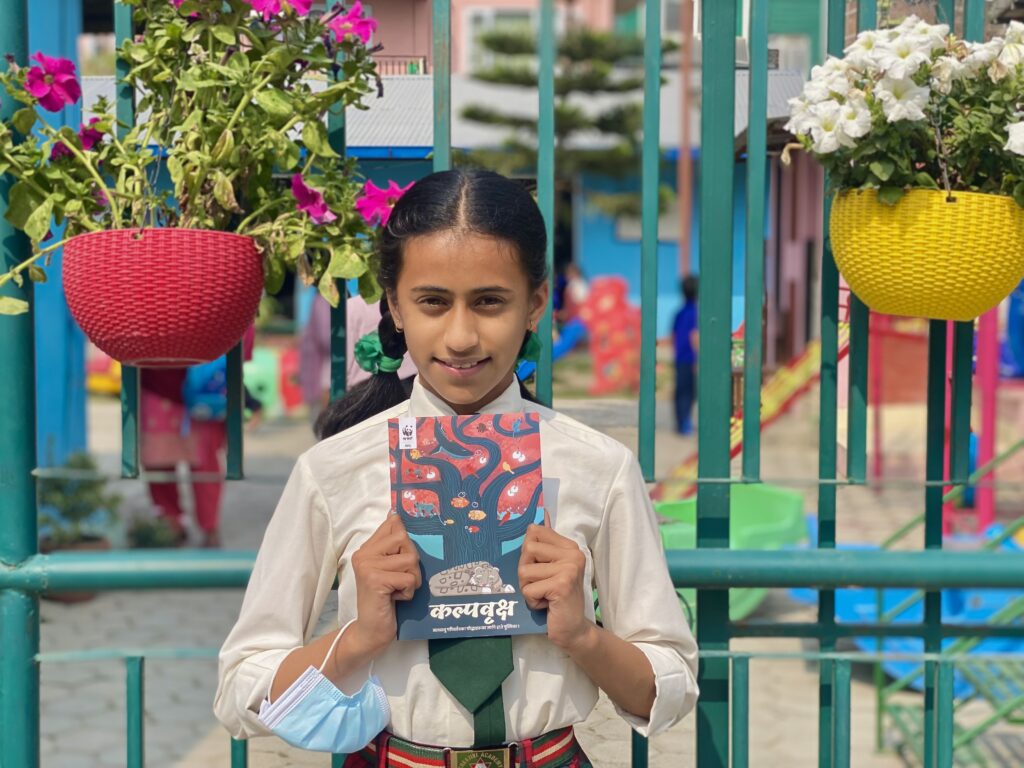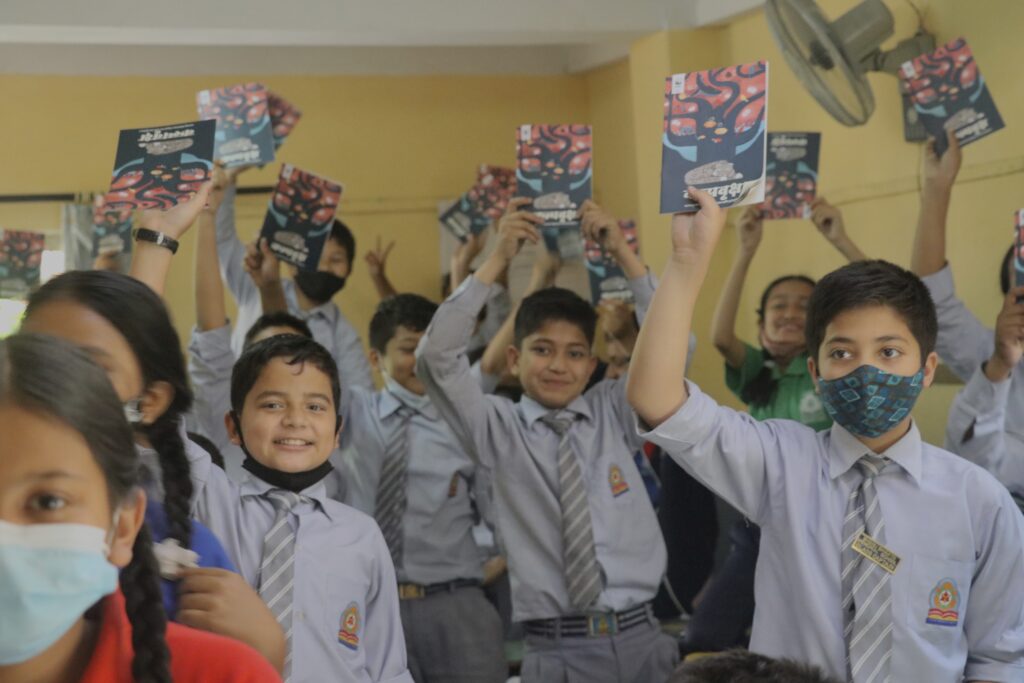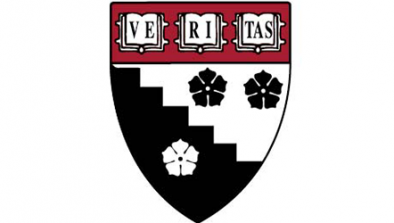Sustainability Spotlight: Q&A with Mohit Rauniyar, Ed. M. ’24
Harvard Graduate School of EducationMohit Rauniyar is an Adrian Cheng Fellow and Master of Education (Ed. M.) candidate at the Harvard Graduate School of Education set to graduate in 2024. An educator in Nepal for more than 13 years and member of the Global Shapers Kathmandu Hub, Mohit and fellow members developed the Kalpavrikshya Climate Change WorkBook to holistically teach climate education in the Nepali community. Learn more about Mohit’s work in our Q&A with him.

How did you first get involved with teaching and addressing climate change as part of your work as an educator?
I have been an educator for more than 13 years. In the process, I have worked in many public schools, nonprofits, individuals, teachers, students, and parents. When I was teaching as a full-time teacher at Bloom Nepal School, an interest-based school in Nepal, my first role was to teach a subject called environmental science, population, and health. This is where I can first remember involving myself with children to talk about climate change from a local perspective and come up with local solutions.
I was a part of Global Shapers Kathmandu Hub, an organization formed in 2012 to bring diverse youth and their collective goal together to shape a more equitable, inclusive, and greener future for our community. Here, as a part of the Green Shapers Team, I, along with other members, developed Kalpavrikshya Climate Change WorkBook with support from the Global Shapers Community, Climate Reality Project, and WWF Nepal.

Could you tell us what the workbook is, your vision for how students respond to it and how you tailored the content to the local context for your school’s community?
Kalpavrikshya – A Climate Warrior’s Workbook is an activity-book designed to serve as a comprehensive guide to climate education tailored to the local context in the Nepali community. It covers topics like climate science, environmental conservation, sustainable practices, and local climate impacts such as landslides and changing weather patterns. Our vision is for students to engage deeply with the material, fostering critical thinking and empowering them to become advocates for positive change in their communities and realize that they can be change makers.
To ensure relevance, we integrated issues and examples from Nepal and actions students can take locally. The beauty of this book, at least that I think, was that it was written in Nepali instead of English. We wanted to reach out to students from underserved communities where climate change is having its biggest impact. Our idea is to instill a sense of ownership and responsibility towards our environment, inspiring these students to take proactive steps toward a sustainable future.

What have you learned from your students (and perhaps from their families) about the ways in which climate change is already affecting their lives?
Well, the first thing I learned from the students was that, sadly, these students really didn’t know exactly what climate change was. In one of the first interactions with these students about climate change – the response was mostly that climate change was a good thing. This is a reflection on our education system that doesn’t put emphasis on learning about the environment and climate change.
Diving deeper and interacting closely with students and some of their families revealed the impacts of climate change in their lives, even though they didn’t realize it was due to climate change. They shared firsthand experiences of changes in weather patterns and agricultural yields diminishing, affecting their livelihoods in different ways. The increasing frequency of landslides and water scarcity were also common issues that they shared.
Their stories underscore the urgent need for action and highlight the importance of inclusive solutions. Listening to their voices informs tailored responses, integrating local context and empowering youth as agents of change. From their experiences, I realized that it is important to foster climate-conscious leadership and advocate for equitable approaches to sustainability, ensuring a brighter future for all.
Are there issues related to climate change that teachers or school leaders are concerned about?
Yes, teachers and school leaders express concerns about integrating climate change education effectively into the curriculum, ensuring students grasp its relevance and urgency. They also worry about resource constraints for implementing sustainable practices in schools and preparing students for the uncertain environmental future they will inherit.
What do you hope to pursue next as an educator (or otherwise) after you complete your Ed.M. at HGSE this spring?
To give you some context, I started working in education in 2010 – so that’s almost 14 years now. After being in this space for about 5 years, I started Canopy Nepal, a social enterprise working to create accessible education for underprivileged students and to promote interactive learning in classrooms in Nepal. We have worked with more than 13,000 students and supported more than 190 scholars’ education journies in Nepal. I hope to scale Canopy’s efforts, leveraging my learnings to enhance educational accessibility and quality.
Along with this, we are also in the process of replicating Kalpavrikshya in different communities around the world, translating it into their local languages and local context. That should certainly be exciting.
Harvard Graduate School of Education
Harvard Graduate School of Education aims to create a healthy, thriving, sustainable community that contributes positive social, economic, and environmental benefits.
